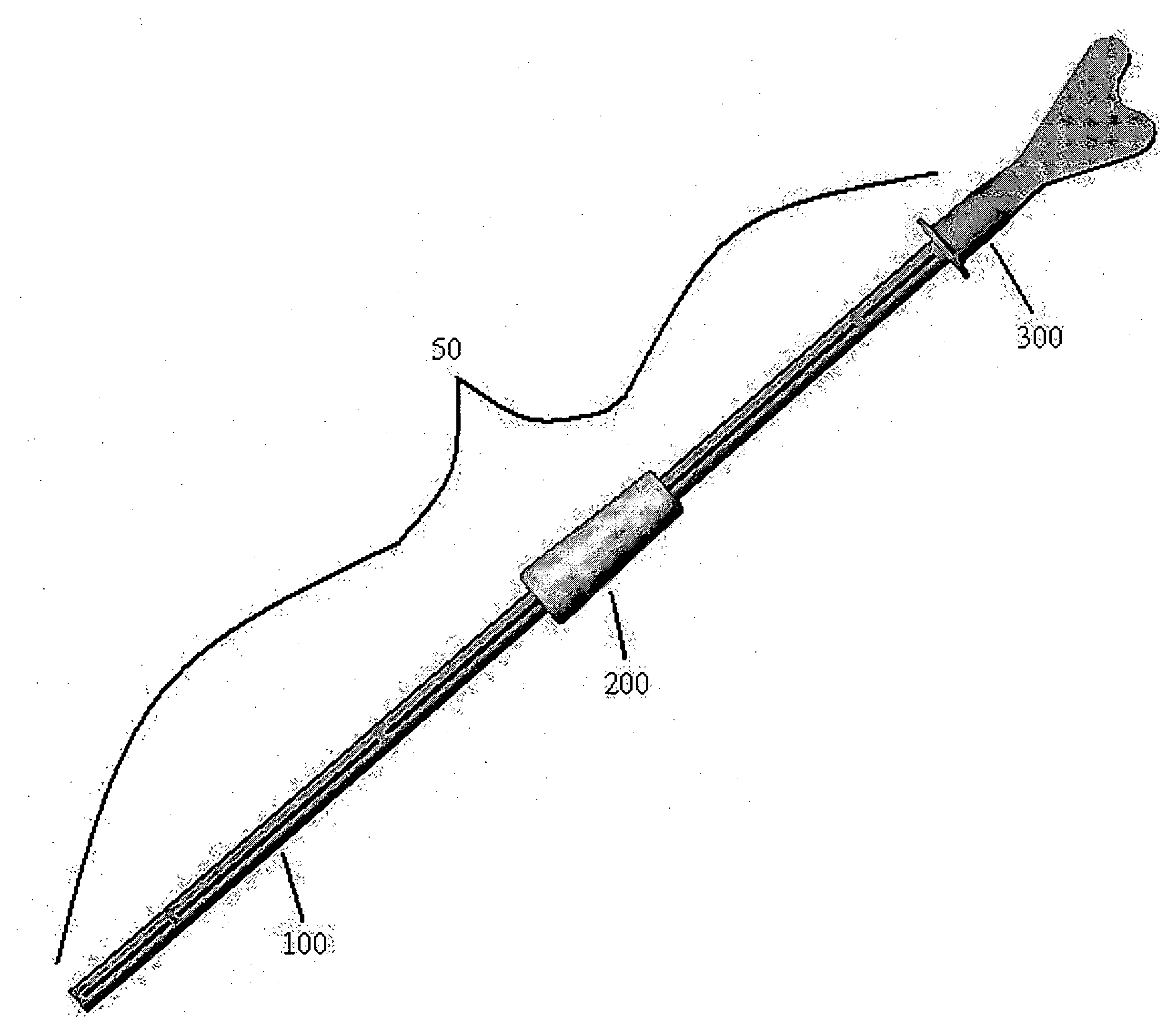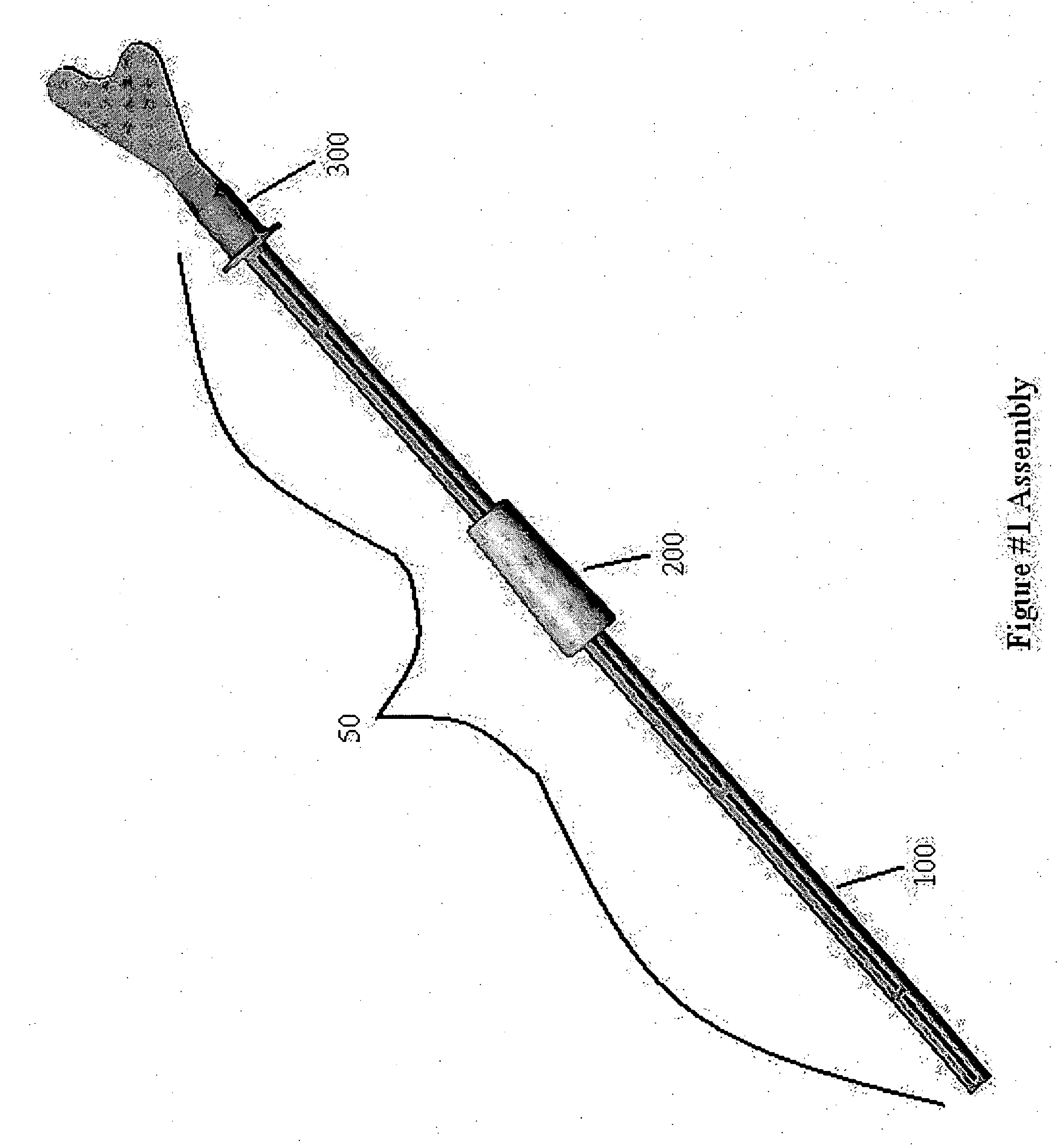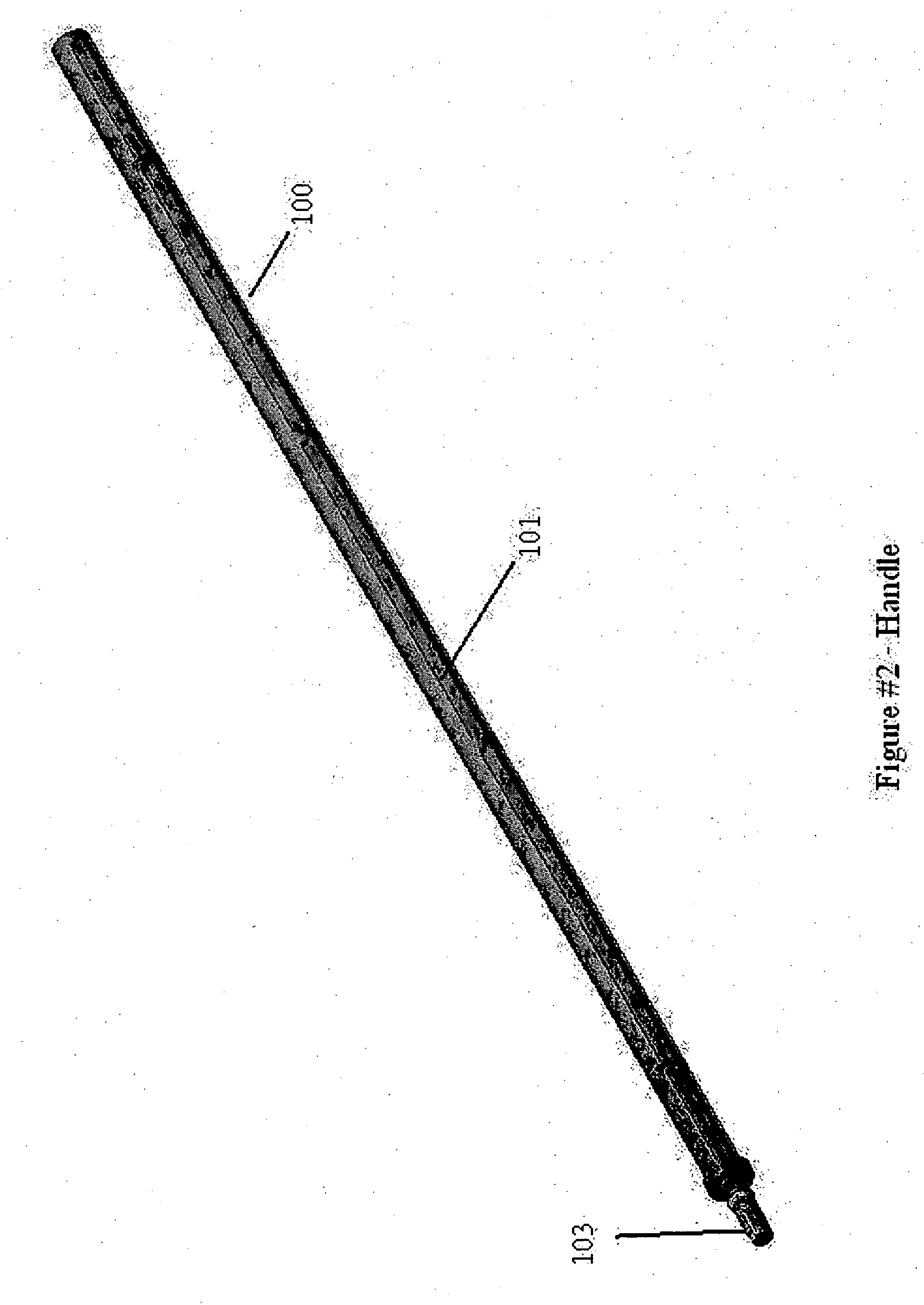Pap smear collection device with ejection sleeve
a collection device and ejection sleeve technology, applied in the field of apparatus and methods for collecting pap smears, can solve the problems of not being able to not being able to scrape the endocervical canal and consistently retrieve an adequate sample, and being either impossible or challenging, so as to reduce the potential for spilling of the collection sample.
- Summary
- Abstract
- Description
- Claims
- Application Information
AI Technical Summary
Benefits of technology
Problems solved by technology
Method used
Image
Examples
Embodiment Construction
[0021] Reference is first made to FIGS. 1-6 which illustrate one presently preferred embodiment of the invention and its use. The device for simultaneously contacting and collecting cells from the endocervical canal and the cervical face of the uterus as 50 and can be seen in FIG. 1. The device 100 is comprised of an elongated handle and a external ridges 101 and distal interface 103. Although it can be appreciated that the handle 100 could be of a variety of lengths, the presently preferred length is about 7 inches. Handle 100 comprises longitudinally extending ridges 101 along the length of handle 100. These ridges 101 serve to provide better grip and ease of handling of the device 50. Handle 100 further comprises a forward end 103 adapted for engagement.
[0022] Ejection sleeve 200 comprises a distal end 201 and proximal end 202 adapted to encapsulate handle 100 and advances to interface with collection head 300 and or 310 at point 302 by providing linear force that expands interf...
PUM
 Login to View More
Login to View More Abstract
Description
Claims
Application Information
 Login to View More
Login to View More - R&D
- Intellectual Property
- Life Sciences
- Materials
- Tech Scout
- Unparalleled Data Quality
- Higher Quality Content
- 60% Fewer Hallucinations
Browse by: Latest US Patents, China's latest patents, Technical Efficacy Thesaurus, Application Domain, Technology Topic, Popular Technical Reports.
© 2025 PatSnap. All rights reserved.Legal|Privacy policy|Modern Slavery Act Transparency Statement|Sitemap|About US| Contact US: help@patsnap.com



